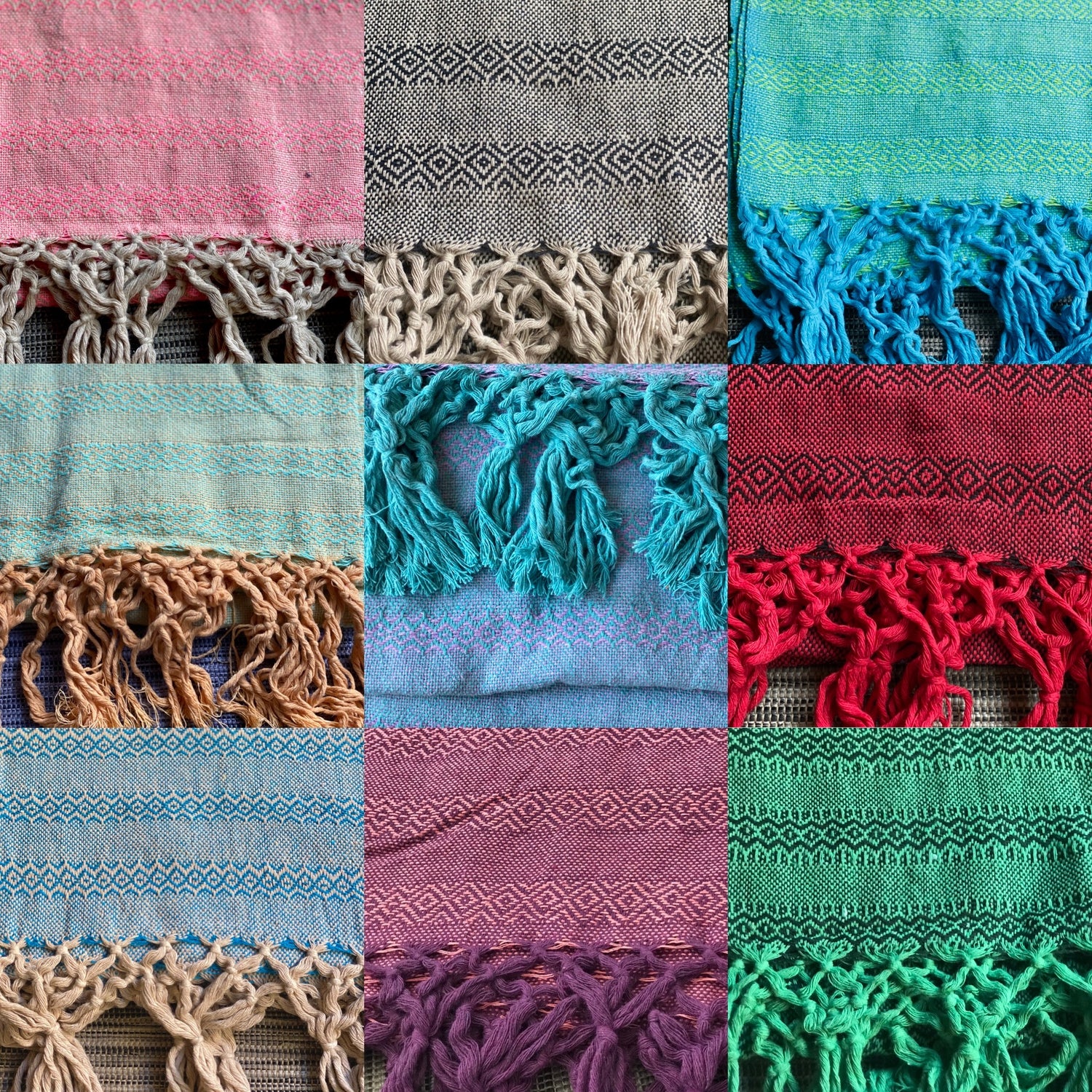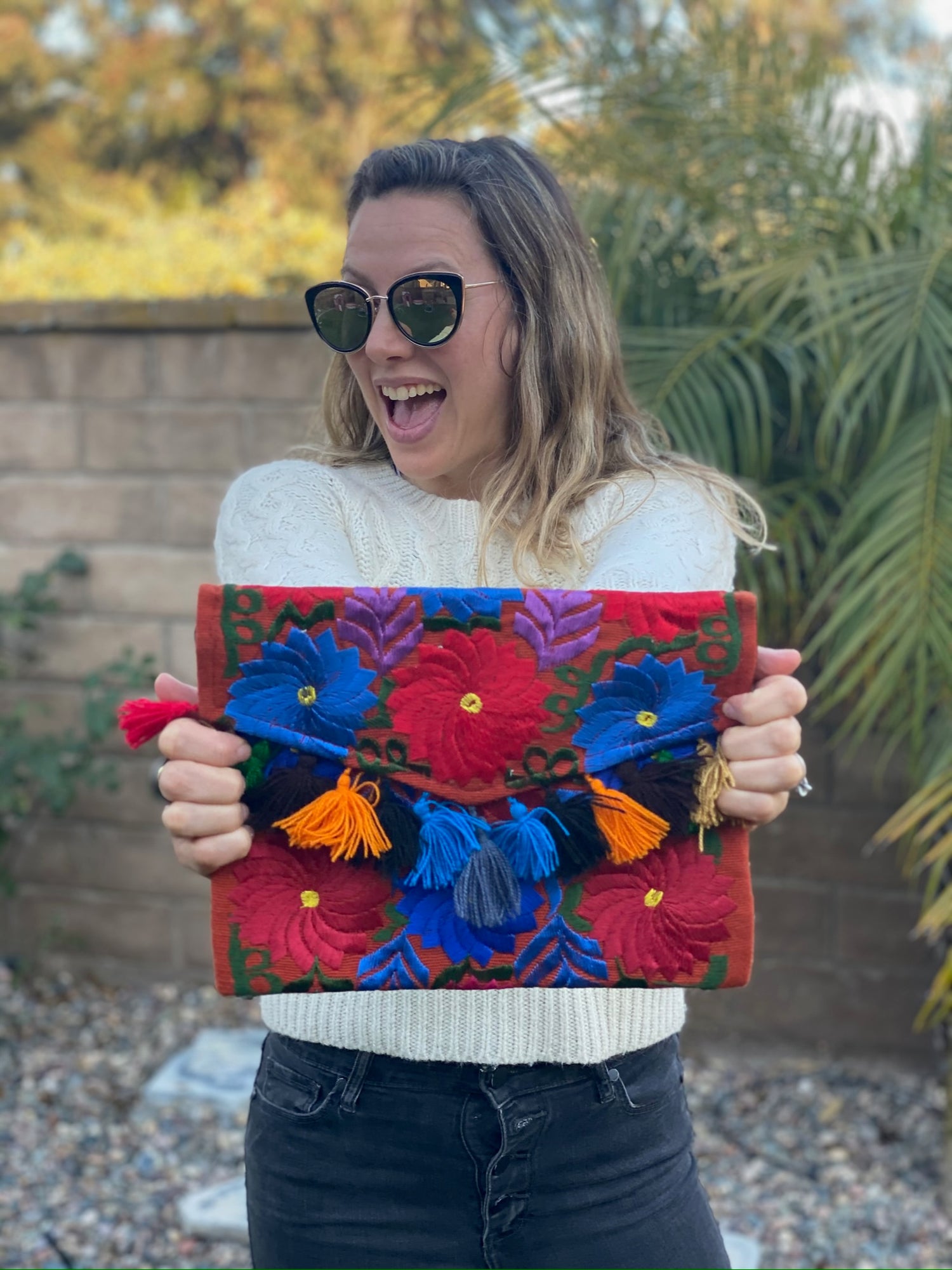The rebozo is more than just a traditional Mexican shawl; it is a beautifully handwoven piece of art that carries cultural significance.
You will discover how this versatile wrap, used for support and comfort during pregnancy and childbirth, has been crafted over generations.
Understanding the intricate process of making a rebozo reveals the skill and care that artisans put into each piece.

As you explore the step-by-step journey of rebozo weaving, you'll learn about the various techniques involved and the materials used.
Each rebozo tells a story, reflecting the heritage of Mexico and Latin America. You will appreciate the craftsmanship and the connection it provides to both the past and present in the community.
Embarking on this exploration will deepen your appreciation for the rebozo and its role in supporting women through significant life events.
Key Takeaways
- The rebozo is a traditional Mexican shawl crafted with care and skill.
- This versatile tool has cultural significance in pregnancy and childbirth practices.
- Understanding its creation connects you to generations of artisans and their heritage.
The Art of Crafting a Rebozo

Crafting a rebozo involves careful selection of materials and mastering weaving techniques. This traditional Mexican shawl not only serves a purpose but also tells a story through its colors and patterns. Here’s a closer look at each important step.
Selecting Quality Materials
When crafting a rebozo, the choice of materials is crucial.
You typically use cotton or agave fibers for their durability and comfort.
- Cotton is preferred for its softness and lightweight feel.
- Agave fibers provide a unique texture and are historically significant.
You should source materials from reliable suppliers, often from regions known for their weaving traditions. This ensures that the fabric you use will age beautifully and withstand daily wear.
Quality materials contribute not only to the visual appeal but also to the cultural significance of the rebozo.
Weaving Techniques and Patterns
Weaving a rebozo employs various techniques that are passed down through generations.
You can use a backstrap loom for a traditional approach, allowing for greater control over the weaving process.
- Pattern types include jaspe, a technique that creates intricate designs using resist-dyeing.
- Common motifs often represent cultural stories or local traditions.
This method requires patience and skill. Each weaver may have a unique style, but the shared techniques highlight the community's craftsmanship.
Your choice in patterns and methods can reflect both personal expression and cultural heritage.
Dyeing: Adding Colors and Meaning
Dyeing is an essential part of creating a vibrant rebozo.
You typically use natural dyes from plants, ensuring the colors remain rich and meaningful.
- Popular colors and their meanings include:
- Red for passion and strength
- Blue for tranquility and peace
- Yellow for joy and optimism
Selecting colors thoughtfully can enhance the emotional impact of the shawl. The dyeing process not only beautifies the fabric but also adds layers of significance that connect the wearer to their culture.
Each hue brings its own story, making the rebozo a true work of art.
Rebozo Techniques During Pregnancy and Childbirth

Using a rebozo can be a vital part of your pregnancy and childbirth experience. This traditional shawl offers various techniques that support comfort, relaxation, and optimal positioning. Here are some key ways the rebozo can assist during these important stages.
Supporting Pregnancy: Exercises and Comfort
The rebozo functions as a supportive tool throughout your pregnancy.
One effective technique is hip wrapping, where the rebozo is tightly wrapped around your hips. This provides belly support and helps ease discomfort in your pelvic ligaments and round ligament pain.
Midwives and doulas often demonstrate gentle exercises with the rebozo, like sifting. This involves a gentle jiggling motion that relaxes the abdominal muscles and helps with back pain.
You've likely experienced anxiety or discomfort from the changes your body goes through. Rebozo techniques can help reduce these feelings.
Additionally, using the rebozo can support your core muscles during exercise.
As you practice movements that promote balance and relaxation, you can find relief from stress and tension. This wrap encourages increased blood flow, promoting physical comfort.
The Role of Rebozo in Labor and Delivery
During labor, the rebozo can play a significant role in easing contractions and making your birth experience more manageable.
The sifting technique is particularly helpful for pain relief as you progress through labor. Practitioners use gentle movements to increase oxytocin levels, aiding in dilation and overall labor efficiency.
You can also benefit from partner support when using the rebozo during labor. Your partner can help hold or maneuver the shawl, providing a comforting presence.
This teamwork fosters a supportive environment, which can help reduce anxiety during delivery.
Various positions can be achieved with the rebozo, such as implementing a gentle twist that allows gravity to assist in the birthing process. This not only aids the position of your uterus but also helps the baby navigate through the birth canal.
Postpartum and Beyond: Multipurpose Uses
After childbirth, the rebozo remains a useful tool.
You can use it for breastfeeding support, allowing for more comfort while feeding your baby. This shawl can help improve your posture and ease tension in your back and shoulders.
It can also be beneficial for belly binding as your body returns to its pre-pregnancy shape. The wrap offers gentle support to your pelvic muscles and fascia, which can help with healing.
Many women find that the rebozo aids in recovery from labor by providing stability to the abdomen.
As your baby grows, the rebozo can transition into a baby carrier. This not only makes it easier to carry your infant but also promotes bonding and closeness during the postpartum period. Its versatility makes the rebozo a valuable item long after childbirth.
Frequently Asked Questions

This section addresses common questions about the rebozo, focusing on its materials, weaving techniques, cultural importance, and usage for carrying newborns. You will also learn how to assess the quality of a handwoven rebozo and its various uses during pregnancy and labor.
What materials are needed to handweave a traditional rebozo?
To handweave a traditional rebozo, you need cotton or wool yarn, a loom, and shuttle sticks. The yarn should be strong and durable to ensure the rebozo can support weight. Some artisans may also use dye for coloring, which can be natural or synthetic.
Can you explain the different techniques involved in weaving a rebozo?
Weaving a rebozo involves several techniques, including plain weave, twill, and lace patterns. Each technique adds different textures and strengths to the fabric. Artisans may vary their methods based on the desired final look and functionality of the rebozo.
What is the historical significance of the rebozo in Mexican culture?
The rebozo has historical roots in Mexican culture, serving as a garment and tool for women. Traditionally, it symbolizes femininity, motherhood, and social status. Throughout history, it has been used in various ceremonies and remains a cherished item in many Mexican households.
How do you properly use a rebozo for newborn carrying?
When using a rebozo for newborn carrying, you should ensure that the fabric is securely wrapped around the baby. Position the baby against your chest, with their head supported and safely nestled. Make sure the rebozo is tied tightly to prevent slipping, providing both comfort and security.
What are the various uses of a rebozo during pregnancy and labor?
During pregnancy, a rebozo can provide support for the belly and hips. In labor, it can help with pain relief. The rebozo also provides comfort and support postpartum, assisting with recovery.
How can the quality of a handwoven rebozo be assessed?
To assess the quality of a handwoven rebozo, examine the evenness of the weave and the strength of the yarn.
Check for any loose threads or inconsistencies in the patterns.
Consider the feel of the fabric; a high-quality rebozo should be soft yet sturdy.




